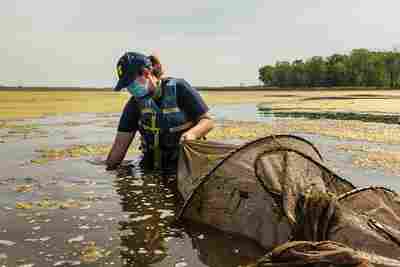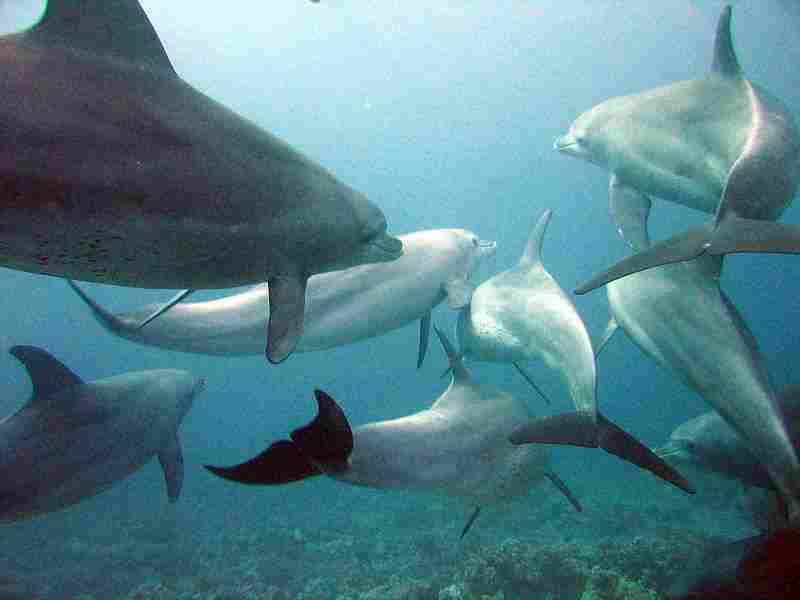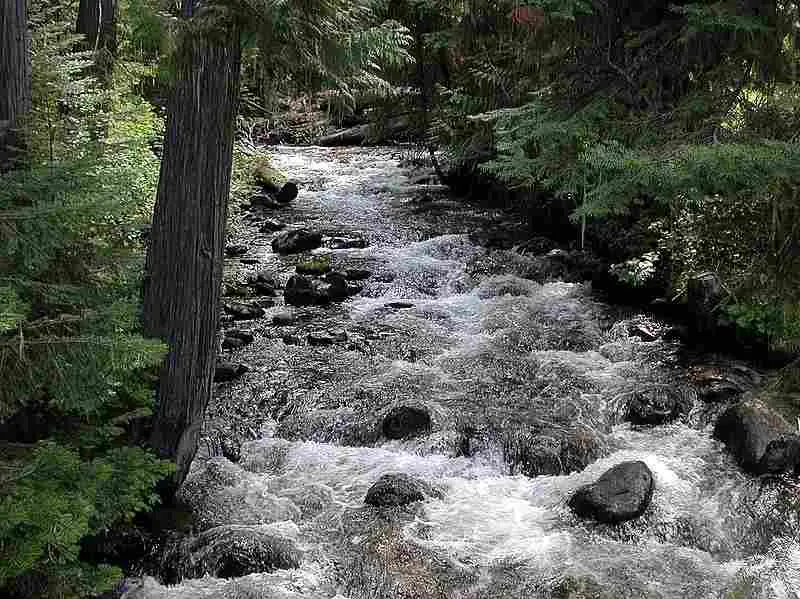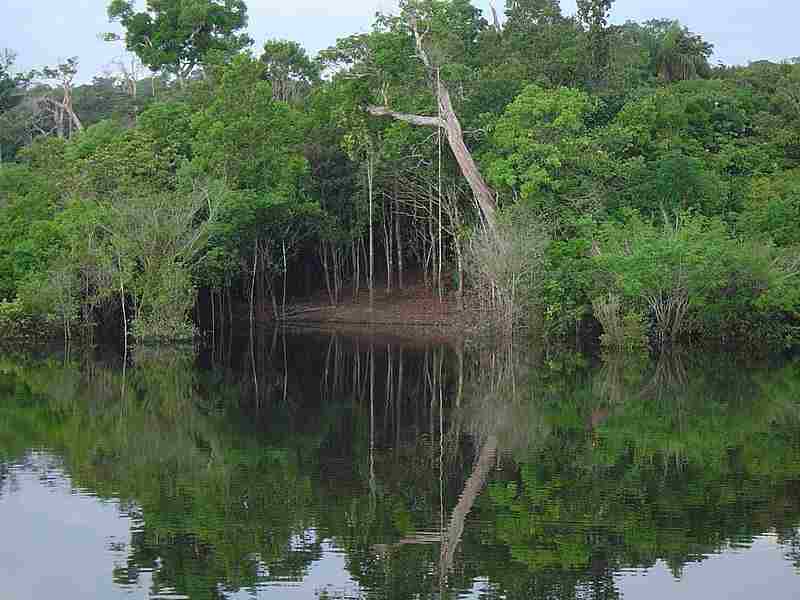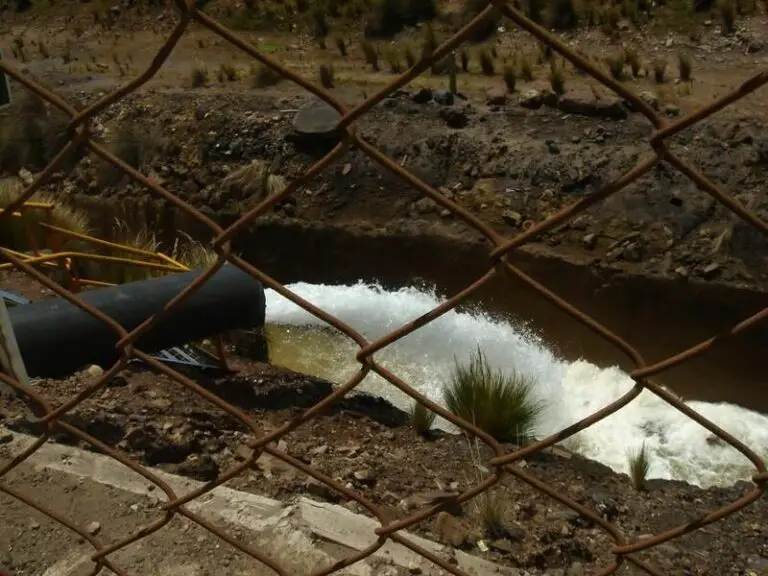Why Estuaries Are Important Explained With 9 Reasons
Why estuaries are important is due to their roles as nesting and breeding sites, in enhancement of aquatic versatility, erosion control, influence on ocean and river quality, utilization in agriculture, sociocultural value; as well as contributions to education, research and development.
This article explains why estuaries are important, with nine (9) reasons, as follows;
1). Estuaries Function as Nesting and Breeding Sites (in explanation of Why Estuaries Are Important)
Estuaries are distinctive and highly-productive ecosystems, that serve as crucial nesting and breeding sites for a wide range of plant and animal species.
This function contributes significantly to the overall ecological value, and global importance, of estuaries.
Why Estuaries Are Important And Productive Ecosystems
Estuaries are important and productive ecosystems because they serve are marine nurseries, migratory rest stops, biodiversity hotspots, conservation areas for endangered species, transitional zones between terrestrial, freshwater and marine ecosystems, and as sites for water quality maintenance.
It is not uncommon for estuaries to be referred to as the "nurseries of the sea".
This is due to their role as sheltered and productive zones where many species of fish, crustaceans, and other (aquatic, semi-aquatic) wildlife find protection and optimal conditions for breeding.
The mixing of fresh river water and saltwater in estuaries; creates a dynamic environment that is rich in nutrients, making this ecosystem ideal for supporting the early life stages of various marine organisms.
Estuaries serve as essential rest and refueling points for long-distance migratory birds [3]. The presence of accessible food sources and relatively safe waters, make estuaries viable stopover sites for these birds, enabling them to replenish their energy reserves before proceeding in their migrations.

Many estuaries are host to a high level of biodiversity, due to their transitional nature that combines various habitat types, and rich nutrient inputs.
The availability of diverse habitats, including wetlands and aquatic zones that range from marshes and mudflats to submerged hydrophytic vegetation, offers opportunities for nesting, feeding, and breeding, for a variety of species.
Fish, crustaceans, and other brackish/marine animals, rely on the sheltered and productive waters of estuaries to meet their reproductive needs. As stated earlier, estuaries offer a protected environment with sufficient food and nutrient resources, which minimized predation risks (for vulnerable organisms) and enhances the survival rates of offspring.
Some endangered species, such as the brown pelican; Pelecanus occidentalis (which was delisted as an endangered species in 2009 [1]), utilize estuaries as breeding grounds and nesting areas. By providing safe and relatively-resourceful environments, estuaries contribute immensely to the conservation and recovery of these threatened species.
Aquatic ecosystem connectivity is supported by estuaries, which act as important ecotones between terrestrial and marine ecosystems. They are transition zones where various species interact to create intricate food webs and nutrient-recycling patterns that contribute to ecological sustainability at regional and global levels.
Estuaries are involved in improving water quality. They are natural water filtration systems that remove pollutants and sedimentary particles from incoming river water [13]. This enhances the productivity of the surrounding coastal environments.
Many estuaries hold sociocultural and economic significance for human populations within and beyond their immediate surroundings. These biomes support recreational activities, such as fishing, boating, and birdwatching, while contributing to aspects of the local economy like tourism.
2). Aquatic Versatility is Enhanced by The Presence of Estuaries
Estuaries are instrumental in enhancing aquatic versatility by providing a unique and dynamic environment where freshwater from rivers meets the salty waters of the sea.
This interaction establishes a transitional zone that supports diverse plant and animal communities, adapted to the challenges of brackish water conditions.
Aquatic versatility, as observed in estuaries, has numerous ecological and environmental implications, and can serve as a good reason why estuaries are important.
Through their dynamic nature that comprise of changing water levels, salinity, temperature, and other parameters, estuaries challenge organisms to adapt and thrive in varied conditions. This adaptability strengthens the resilience of species and ecosystems, making them more capable of withstanding hydrological hazards, and disturbances and climate change.
Where Are Estuaries Found: A Highlight of Typical Estuary Location
Estuaries are typically found where rivers meet large bodies of water, such as seas.
They are common features along coastlines around the world, and may be found in areas such as river deltas, tidal embayments, and coastal plains. Estuaries can also be found where rivers flow into large lakes, as occurs in the Great Lakes [9].
Why Is It Important to Protect Estuaries
It is important to protect estuaries due to their ecological significance, and the many benefits they provide to both natural ecosystems (that is; ecosystem services [14]), and human communities.
Estuaries support biodiversity by providing critical habitat for numerous species. They also contribute to nutrient cycling, stormwater containment/water conservation, water quality improvement, as well as recreational and economic opportunities.
Several conservation efforts have been made to ensure the preservation of these valuable ecosystems and the services they provide to the environment and society.
3). Erosion Control Function (in explanation of Why Estuaries Are Important)
Estuaries are important for providing erosion control along coastlines, and for protecting vulnerable areas from the effect of various agents of erosion.
The presence of dense estuarine vegetation, and associated ecosystems like wetlands, offers natural solutions for coastline stabilization. This erosion control function serves as a critical reason why estuaries are important for both the environment and nearby human communities.
Why Erosion Control is Important
Erosion control in important because of its contributions to coastline stabilization, protection of infrastructure, hazard prevention, sediment trapping, and habitat protection.
Estuarine vegetation, including mangroves and salt marsh grasses; plays a significant role in stabilizing coastlines by mitigating soil erosion.
The root systems of these plants bind soil particles and rock fragments together, in such a manner that reduces the vulnerability of coastlines to erosion caused by waves, stormwater masses, and tidal surges [10].

Coastal erosion can pose a threat to infrastructure, including buildings and roads, and often lead to substantial economic losses and safety concerns. Estuarine ecosystems act as natural barriers that protect these essential structures from the impacts of erosion.
The presence of estuarine wetlands and marshes acts increases mechanical resilience along the coastline, because these biotic factors can absorb and dissipate the energy of waves and water currents. Such dissipating effect helps to prevent the direct impact of erosional forces on the coastline, thereby reducing the rates of erosion.
Estuarine systems and their associated habitats, including oyster reefs and salt marshes, function as sediment traps [11]. These systems capture suspended and dissolved materials that are being carried by water currents, and may reduce the amount of sediment that reaches the coastline. Such mechanism of sediment capture helps to maintain shoreline integrity and conserve local species.
The points discussed so far indicate that the interconnectedness of estuarine ecosystems, including their soil structure and vegetation, creates a natural system of erosion control. This system mitigates the effects of erosion and contributes to the overall health and stability of coastal areas.
Erosion control in estuaries is also beneficial to the unique habitats provided by these ecosystems, which are vital for the survival of numerous species of plants and animals. By preserving these habitats, estuaries support biodiversity and maintain effective ecosystem functions.
An Overview of How Estuaries Provide Erosion Control
Estuaries provide erosion control through the functions of mechanically-resilient features like salt marshes, mangroves, and oyster reefs; all of which are part of the estuarine ecosystem.
Salt marsh grasses possess extensive root systems that help stabilize soil, reduce wave energy, and trap sediments. Their presence along coastlines can significantly reduce the rate and severity of erosion.
Mangroves are particularly effective in erosion control because they possess intricate root systems, and are able to trap sediment. Their dense vegetative structures form a barrier against wave action, and protects coastal areas.
Oyster reefs, which are common in estuarine environments, aid in erosion control. The structure of oyster beds provides a mechanical barrier that absorbs wave energy and reduces erosion while providing valuable habitat for marine life.
4). Influence on Ocean/River Water Quality
Estuaries are crucial in influencing both the quality of ocean water and that of the freshwater that flows into them.
This function highlights why estuaries are important ecosystems, as they serve as natural filters, regulators, and maintainers of water quality for both marine organisms and human communities.
Why Estuaries Influence Water Quality
Estuaries influence water quality because their biotic and abiotic components work together to achieve water purification, pollutant removal, nutrient regulation, and buffering effects.
It is correct to describe estuaries as natural filtration systems, because they are capable of trapping and settling sediments carried by rivers and streams before these materials reach the open ocean. Sediment removal by estuaries, prevents excess accumulation of particulates, and maintains the clarity of oceanic and fluvial waters.
In addition to the removal of sediment, estuaries may filter out pollutants such as chemicals that are present in freshwater inflow, thereby preventing them from directly entering the ocean [4]. This process reduces marine pollution, contributing to ecologic sustainability.
Another method by which water pollution is mitigated by estuaries is dilution. The mixing of freshwater with seawater in estuaries, dilutes several contaminants, by reducing their concentration and potential impact on the ecosystem.

Nutrients from freshwater sources, such as rivers, can lead to nutrient pollution and eutrophication in coastal waters, causing harmful algal blooms and reducing the effectiveness of the aquatic oxygen cycle, through oxygen depletion.
Estuaries can help regulate nutrient levels by a combination of pollutant removal and dilution, thereby reducing the risk of pollution-related ecological imbalances.
Buffering effects of estuaries on water quality, come from the interaction between freshwater and saltwater masses. This interaction helps to buffer changes in water quality, salinity and temperature. The estuarine buffering effect is vital for maintaining stable and suitable conditions for various aquatic organisms inhabiting this biome.
Lastly, estuaries provide habitat for filter-feeding organisms like mussels and oysters, which actively remove particulate material from the water column, and enhance water quality.
Overview of Factors Influencing Estuaries
Factors influencing estuaries and their ecological roles like water quality-maintenance, include; fluvial inflow, tidal action, coastal development, and climate change.
The quality and quantity of water flowing from rivers into estuaries, directly affects the types and amounts of soluble pollutants, and sedimentary materials, that estuaries will interact with.
Continuous ebb and flow of tides, impact the trends of water circulation and mixing, which in turn affect the distribution of sedimentary particles and other pollutants within the estuary [16].
Coastal development through human activities near estuaries, including urbanization and agriculture, can introduce various pollutants and contaminants that affect water quality.
Rising sea levels, altered precipitation patterns, and increasing temperatures are all attributes of climate change. These factors can influence the frequency and intensity of estuarine interactions as well as their impact on water quality.
Most Important Features of an Estuary
The most important features of an estuary include; mixing zone, transition zone, salt marshes and wetlands, tidal fluctuations, and estuarine organisms like filter-feeders.
Mixing zone is the area where inflowing freshwater from rivers meets the salty seawater, resulting in the creation of brackish water with unique characteristics.
The transition zone is a region in estuarine ecosystems that marks the onset of significant change in the physical and chemical properties of water, due to the mixture of freshwater and saltwater masses.
Wetlands and salt marshes occur in estuaries, where they function as natural filters and buffers, that contribute to the improvement of water quality and mitigation of erosion.
The action and fluctuations of tidal forces, play a vital role in determining the movement, mixing, and dispersal of water and other associated substances.
Lastly, estuaries provide habitat for various filter-feeding organisms that actively purify and cleanse the water column as they feed, thereby enhancing water quality.
5). Estuaries Are Utilized in Agriculture (in explanation of Why Estuaries Are Important)
Estuaries are useful for supporting agricultural activities, particularly in aquaculture and irrigation.
The rich nutrients, sheltered conditions, and unique ecological characteristics of estuaries, make them valuable resources for various forms of agriculture, by which they contribute to both food production and economic growth.
Aquaculture in Estuaries
Estuaries provide optimal conditions for aquaculture, as they are nutrient-rich with inputs from freshwater and marine sources, ensuring a balanced environment that supports the growth of several aquatic organisms.
Bivalve cultivation is particularly effective in estuaries, including oysters, scallops, clams, and mussels [6]. The nutrient-rich waters promote the rapid growth of these filter-feeding organisms, with minimal threat to survival.
Estuaries also support the cultivation of various fish species, including salmon, tilapia and trout. The sheltered waters and accessible food sources in estuaries enhance the growth and development of these fish.
Aquaculture in estuaries contributes to local economies by providing employment opportunities, and a source of high-quality seafood.
Irrigation and Agriculture In Estuaries
The nutrient-rich waters of estuaries can be utilized for irrigating agricultural lands. Nutrients carried by estuarine waters can enhance soil fertility and promote the growth of crops.
Estuaries can serve as a freshwater source for irrigation in regions where freshwater availability is limited.
Proper management of estuarine water resources for irrigation, can contribute to sustainable agricultural practices (namely water and soil conservation), and can reduce pressure on other freshwater sources.
Economic Importance of Estuaries
The economic importance of estuaries is based on their roles in industrial processes, commercial fishing/fish farming, crop production, tourism, ecosystem services, employment, research and education.
Economic output of estuaries is enhanced by their role in supporting various industries. Activities such as shipping, commercial fishing, and regional development are potential contributors to the economic output of estuarine regions.
Estuaries are critical habitats for numerous commercially valuable fish species. A huge percentage of commercial fish and other seafood caught in the U.S. spend some or all of their lives in estuaries, including species like salmon, blue crab, and oysters [12].
Tourism benefits from estuaries due to their natural beauty, diverse ecosystems, and recreational opportunities like fishing, birdwatching and boating. This generates revenue and supports local economies.
Several ecosystem services are provided by estuaries, including water filtration, flood protection, and erosion control, all of which have economic value in terms of reducing costs related to water treatment, environmental remediation and disaster management.
Various industries associated with estuaries, such as fisheries, tourism, and aquaculture, provide employment opportunities, especially for local communities.
Estuaries also serve as viable sites for scientific research and environmental education, by which they contribute to knowledge advancement and supporting educational institutions.
6). Estuaries Have Sociocultural Value
Estuaries are not only biologically diverse ecosystems but also hold significant sociocultural value. Their importance extends beyond ecological functions/services, to encompass various aspects of human societies, cultures, and traditions.
Aspects of the Sociocultural Value of Estuaries
Cultural significance can be attributed to some estuaries, for indigenous and local communities. These estuaries have been important locations for rituals, ceremonies, and traditional practices for generations.
Many communities have historical links to estuaries, with these areas playing a major role in their cultural heritage. Estuaries have served as sites for settlement, trade, and various forms of interaction, shaping the social fabric of these societies.
Recreation and tourism can be named among the sociocultural values of estuaries.
This is because the recreational opportunities provided by estuaries could be considered important for the well-being of local residents and tourists. Activities like boating, fishing, birdwatching, and beachcombing, all contribute to people's quality of life.
Closely linked to tourism and historical relevance id the fact that estuaries offer educational opportunities for people of all ages. They help individuals learn about ecosystems, biodiversity, conservation, and environmental sustainability.
Estuaries often inspire artists, writers, and creators across various mediums; whose creative works are forms of sociocultural expression. The beauty, dynamic nature, and diversity of estuaries; provide a source of creative inspiration and cultural expression.
As earlier implied, estuaries can be integral to the identity of certain communities. They may be referenced in local stories, songs, and other oral traditions, which contribute to the preservation of cultural heritage.
Estuaries are one of several naturally-occurring phenomena that contribute to a sense of place, by fostering a strong connection between people and their natural surroundings. This connection can lead to increased community engagement in conservation efforts.

Lastly, the sociocultural significance of estuaries often translates into economic value by increasing emphasis on tourism, cultural events, and related activities. This economic value can support local economies and livelihoods.
7). Education, Research, and Developmental Value of Estuaries (in explanation of Why Estuaries Are Important)
Estuaries hold multifaceted value beyond their ecological significance, providing platforms for education, research, and developmental initiatives.
These dynamic ecosystems offer unique opportunities for learning, scientific exploration, and general advancements in various fields.
Overview of the Educational Value of Estuaries
The educational value of estuaries can be traced to their roles in; scientific research and exploration, enhancement of educational experiences; curriculum enrichment, fostering future scientific growth, applied science and innovation, conservation and management insights, policies and decision-making, among others.
Estuaries can be said to serve as living laboratories, which enable scientists to delve into intricate interactions between freshwater and saltwater, to study biodiversity, and investigate the environmental impacts of human activities [7]. These environments offer invaluable insights into ecological processes, ecosystem dynamics, and effects of climate change/global warming.
Tangible settings for education programs are provided by estuaries, which can captivate students and the public alike in experiential learning. Hands-on experiences and field trips in estuaries, foster understanding of marine biology, ecology, water quality, and environmental management, thereby promoting awareness of natural systems.

Educators utilize estuaries as resources for real-world teaching, by infusing theoretical lessons with practical examples of ecological concepts. The dynamic nature of estuaries, their diverse inhabitants, and their multiple ecological roles offer rich content for curriculum development and innovative pedagogical schemes.
By supporting education and research, estuaries are instrumental in cultivating the next generation of scientists, marine biologists, environmental researchers, and ecologists among others. Engaging in research projects within estuaries can equip students with practical skills, while nurturing critical thinking, and encouraging scientific inquiry.
The complex nature of estuarine ecosystems provides a viable testing ground for innovative technologies and solutions in habitat restoration, water quality monitoring, and sustainable management. Insights gained from studying estuaries can have far-reaching implications for addressing broader environmental challenges in other ecological niches.
As implied in the above sentence, research conducted in estuaries may serve as the framework for conservation and restoration strategies [5]. A deeper knowledge of of estuarine dynamics will aid in developing effective plans to safeguard and rehabilitate these important ecosystems.
Scientific findings from estuarine research contribute to evidence-based environmental policies and management decisions. Insights into estuarine processes inform resource allocation, regulations, and adaptive management practices.
Estuarine research may also yield information to support the development of sustainable practices in aquaculture, fisheries, tourism, and other related industries. Establishing a balance between economic activities and ecosystem conservation is essential for long-term sustainability.
Lastly, estuaries are educationally important for their cultural and historical significance, so that research in these domains enriches the understanding of relationships that have evolved between humans and the environment over time.
8). Estuaries Control Floods and Hightide Influences
Estuaries serve as critical natural buffers against flooding, by managing the impacts of high tides and storm events, which makes them important in maintaining coastal resilience and minimizing hazards.
The ability of estuaries to regulate water flow and sediment transport, is helpful for mitigating the adverse effects of flood events and high tides.
How Estuaries Contribute to Flood and Hightide Control
Estuaries function as natural floodplains during heavy rainfall and storm surges. They can absorb excess water, and reduce the risk of inland flooding by temporarily storing and gradually releasing it.
The expansive area and complex network of channels in estuaries, are components that enable them to attenuate floodwaters.

Floods and storm events in river systems, usually transport significant amounts of sediments and dissolved nutrients. Estuaries intercept these materials, thereby preventing excessive deposition upstream and downstream. This regulation is effective for maintaining water quality and ecosystem health.
Many estuaries serve as a protective barrier against the impacts of high tides and storm surges. The gradual transition from freshwater to saltwater in estuaries, helps to dissipate wave energy, to reduce the force of incoming tides and minimize erosion of coastal areas.
During severe weather events, estuaries can help to attenuate the height and intensity of storm surges. The combination of estuarine features such as brackish wetlands, and aquatic meadows, acts as a natural buffer that absorbs, dissipated and disperses the energy of incoming waves.
The intricate network of channels, sedimentary masses, and vegetation within estuaries provides a system that stabilizes coastal regions and limits erosion. Sediments that are deposited by stormwater during floods and high tide events help build and maintain landforms that also protect against coastal erosion.
Freshwater-saltwater mixing dynamics in estuaries, are important for modulating extreme events. The ability to control the balance between freshwater inflow and oceanic intrusion helps to manage salinity levels, and prevents excessive saltwater intrusion or freshwater depletion.
Lastly, estuaries enhance the resilience of coastal communities by their inherent ability to regulate water flow and manage extreme events. Protecting and restoring estuarine ecosystems aids in adapting to changing climatic conditions and reducing vulnerability.
9). Carbon Sequestration in Estuaries is Useful Against Climate Change (in explanation of Why Estuaries Are Important)
Estuaries play a key role in mitigating climate change through carbon sequestration; a process that involves capturing and storing carbon dioxide (CO2) from the atmosphere [8].
This "blue carbon" storage is known to occur in the sediments of estuaries and associated coastal habitats, such as seagrass beds and mangroves. The significance of carbon sequestration in estuaries lies in its potential to counteract the increasing levels of CO2 in the atmosphere, thereby reducing the rate and impact, of global warming and climate change.
Importance of Carbon Sequestration for Climate Change
The importance of carbon sequestration for climate change can be discussed in terms of atmospheric CO2 removal, mitigation of global warming, creation of carbon sinks, long-term carbon storage; enhancement of ecosystem resilience, and support of conservation efforts.
Carbon sequestration involves capturing CO2 from the atmosphere and storing it in natural reservoirs. By removing CO2, which is a major greenhouse gas responsible for global warming, estuaries contribute to reducing the concentration of these gases in the atmosphere.
The accumulation of excess CO2 in the atmosphere, contributes to the greenhouse effect, which leads to global warming [2]. Carbon sequestration in estuaries helps to mitigate this warming effect by storing carbon for extended periods, thereby preventing it from re-entering the atmosphere.
As stated earlier, estuaries and associated coastal habitats act as "carbon sinks," that effectively trap and store CO2. This prevents the carbon from being released into the atmosphere, where it would otherwise contribute to the greenhouse effect and altered climatic conditions.
Long-term storage of carbon can occur in estuary sediments, which have the capacity to store carbonaceous materials for thousands of years, making them valuable reservoirs for carbon sequestration. Unlike forests, which eventually release carbon as they decompose [15], estuarine sediments, being inorganic; provide a more stable and long-term solution for carbon storage.
Carbon sequestration in estuaries also benefits these ecosystems by increasing their resilience to climate change. As carbon storage prevents the rapid accumulation of CO2 in the atmosphere, it mitigates the impacts of CO2 atmospheric accumulation; such as ocean acidification and rising sea levels, on marine life.
Lastly, the conservation and restoration of estuaries and their associated habitats, such as mangroves and seagrass meadows, are integral to carbon sequestration efforts. This is because these habitats provide a natural means of capturing and storing carbon, which further underscores their conservation importance.
Conclusion
Reasons why estuaries are important include;
1. Estuaries Function as Nesting and Breeding Sites
2. Aquatic Versatility is Enhanced by The Presence of Estuaries
3. Erosion Control Function
4. Influence on Ocean/River Water Quality
5. Estuaries Are Utilized in Agriculture
6. Estuaries Have Sociocultural Value
7. Education, Research and Developmental Value
8. Estuaries Control Floods and Hightide Influences
9. Carbon Sequestration in Estuaries is Useful Against Climate Change
References
1). Anderson, D. W.; Henny, C. J.; Reyes, C. G.; Gress, F.; Palacios, E.; del Prado, K. S.; Gallo-Reynoso, J. P.; Bredy, J. (2013). "Size and distribution of the California Brown Pelican metapopulation in a non-ENSO year." Marine Ornithology 41(2):95-106. Available at: https://www.academia.edu/15517948/Size_and_distribution_of_the_California_Brown_Pelican_metapopulation_in_a_non_ENSO_year. (Accessed 23 August 2023).
2). Anderson, T. R.; Hawkins, Ed.; Jones, P. D. (2016). "CO2, the greenhouse effect and global warming: From the pioneering work of Arrhenius and Callendar to today's Earth System Models." Endeavour 40(3). Available at: https://doi.org/10.1016/j.endeavour.2016.07.002. (Accessed 23 August 2023).
3). Catry, T.; Granadeiro, J. P.; Gutiérrez, J. S.; Correia, E. (2022). "Stopover use of a large estuarine wetland by dunlins during spring and autumn migrations: Linking local refuelling conditions to migratory strategies." PLoS ONE 17(1):e0263031. Available at: https://doi.org/10.1371/journal.pone.0263031. (Accessed 23 August 2023).
4). Celis-Hernandez, Cundy, A. B.; Croudace, I. W.; Ward, R. D.; Busquets, R.; Wilkinson, J. (2020). "Assessing the role of the "estuarine filter" for emerging contaminants: pharmaceuticals, perfluoroalkyl compounds and plasticisers in sediment cores from two contrasting systems in the southern U.K." Water Research 189(2). Available at: https://doi.org/10.1016/j.watres.2020.116610. (Accessed 23 August 2023).
5). Ducrotoy, J.-P.; Dauvin, J.-C. (2008). "Estuarine conservation and restoration: The Somme and the Seine case studies (English Channel, France)." Marine Pollution Bulletin 57(1-5):208-18. Available at: https://doi.org/10.1016/j.marpolbul.2008.04.031. (Accessed 23 August 2023).
6). Forrest, B.; Keeley, N. B.; Hopkins, G. A.; Webb, S. C.; Clement, D. (2009). "Bivalve aquaculture in estuaries: Review and synthesis of oyster cultivation effects." Aquaculture 298(1-2):1-15. Available at: https://doi.org/10.1016/j.aquaculture.2009.09.032. (Accessed 23 August 2023).
7). Jing, K.; Zhiguo, G.; Yunzhong, J.; Hao, W. H. (2012). "Current Study on Estuarine Coastal Ecological Environment and Its Development." Procedia Engineering 28:171–177. Available at: https://doi.org/10.1016/j.proeng.2012.01.701. (Accessed 23 August 2023).
8). Kuwae, T. (2016). "Blue carbon in estuarine and shallow water systems - uptake of atmospheric CO2 and carbon sequestration." Available at: https://www.researchgate.net/publication/301223038_Blue_carbon_in_estuarine_and_shallow_water_systems_-_uptake_of_atmospheric_CO2_and_carbon_sequestration_-. (Accessed 23 August 2023).
9). Larson, J. H.; Trebitz, A. S.; Steinman, A. D.; Wiley; M. J.; Mazur, M. C.; Pebbles, V.; Braun, H. A.; Seelbach, P. W. (2013). "Great Lakes rivermouth ecosystems: Scientific synthesis and management implications." Journal of Great Lakes Research 39(3). Available at: https://doi.org/10.1016/j.jglr.2013.06.002. (Accessed 23 April 2023).
10). Riddin, T.; Adams, J. B. (2021). "Salt marsh erosion in a microtidal estuary." African Journal of Marine Science 43(2):1-9. Available at: https://doi.org/10.2989/1814232X.2021.1906319. (Accessed 23 April 2023).
11). Ridge, J. T.; Rodriguez, A. B.; Fodrie, F. J. (2016). "Salt Marsh and Fringing Oyster Reef Transgression in a Shallow Temperate Estuary: Implications for Restoration, Conservation and Blue Carbon." Estuaries and Coasts 40(4). Available at: https://doi.org/10.1007/s12237-016-0196-8. (Accessed 23 April 2023).
12). Tallis, H.; Ruesink, J. L.; Dumbauld, B.; Hacker, S.; Wisehart, L. M. (2009). "Oysters and Aquaculture Practices Affect Eelgrass Density and Productivity in a Pacific Northwest Estuary." Journal of Shellfish Research 28(2). Available at: https://doi.org/10.2983/035.028.0207. (Accessed 23 April 2023).
13). Teuchies, J.; Vandenbruwaene, W.; Carpentier, R.; Bervoets, L.; Temmerman, S.; Wang, C.; Maris, T.; Cox, T. J.; Van Braeckel, A.; Meire, P. (2013). "Estuaries as filters: the role of tidal marshes in trace metal removal." PLoS One. 2013 Aug 7;8(8):e70381. Available at: https://doi.org/10.1371/journal.pone.0070381. (Accessed 23 August 2023).
14). Thrush, S. F.; Townsend, M.; Hewitt, J. E.; Davies, K. K.; Lohrer, A. M.; Lundquist, C. J.; Cartner, K. (2014). "The many uses and values of estuarine ecosystems." Ecosystem Services in New Zealand – Condition and Trends (pp.226-237). Available at: https://www.semanticscholar.org/paper/THE-MANY-USES-AND-VALUES-OF-ESTUARINE-ECOSYSTEMS-Townsend-Hewitt/79ad167193b16aa0bc0c117d7af158d604156fae. (Accessed 23 August 2023).
15). Vogt, D. J.; Sigurdadottir, R.; Zabowski, D.; Patel-Weynand, T. (2006). "Forests and the Carbon Cycle." Forests and Society: Life Cycles of Forests in Human Landscapes (pp.188-227). Available at: https://doi.org/10.1079/9781845930981.0188. (Accessed 23 August 2023).
16). Yin, K. D.; Harrison, P. J. (2000). "Influences of flood and ebb tides on nutrient fluxes and chlorophyll on an intertidal flat." Marine Ecology Progress Series 196:75-85. Available at: https://doi.org/10.3354/meps196075. (Accessed 23 August 2023).
